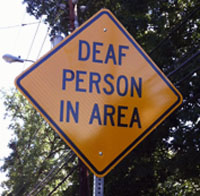

 The authors of this webtext have thought deeply about these issues of inclusion and empowerment, asserting an ethic of inclusion—nothing about us without us. Modern traditions of design leave accustomed power structures unquestioned and relationships between inside and outside unchanged. While Pullin (2009) moved the argument forward in Design Meets Disability, his book remains an exploration of designers working for the needs of disabled clients or recognizing potential markets for artifacts created with an ethic of resonant design. Although powerfully and clearly presented, Design Meets Disability, as a manifesto, does not explore the potential contribution to culture that would come from further interrogating the relationships that make society a powerfully disabling force, limiting to physical, social, and lifeworld potentials for millions. In other words, it calls for change without fully recognizing how disruptive the needed changes may be.
The authors of this webtext have thought deeply about these issues of inclusion and empowerment, asserting an ethic of inclusion—nothing about us without us. Modern traditions of design leave accustomed power structures unquestioned and relationships between inside and outside unchanged. While Pullin (2009) moved the argument forward in Design Meets Disability, his book remains an exploration of designers working for the needs of disabled clients or recognizing potential markets for artifacts created with an ethic of resonant design. Although powerfully and clearly presented, Design Meets Disability, as a manifesto, does not explore the potential contribution to culture that would come from further interrogating the relationships that make society a powerfully disabling force, limiting to physical, social, and lifeworld potentials for millions. In other words, it calls for change without fully recognizing how disruptive the needed changes may be.
Remember always that humans by definition are physically able, culturally normal, for only part of their adult existence: All bodies eventually fail and potential sources of these failures are as numerous as cells emerging from self-replicating genes, and the prions and synapses comprising our neuromuscular structures. We enable our future disabled selves by participating in inclusive and responsive design throughout our lifetimes.